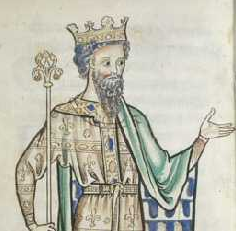The tantalizing footprint of the Old Minster at Winchester lies just to the north of Winchester Cathedral
The Old Minster Winchester, was the Anglo-Saxon cathedral for the diocese of Wessex and then Winchester from 660 to 1093. Facing the front entrance of Winchester Cathedral, it stood on a site immediately north of and at an angle to Winchester Cathedral. Part of the structure lies beneath the cathedral.
The Old Minster, constructed of stone, was built in 648 for King Cenwalh of Wessex and Saint Birinus. It became the first Christian church in Winchester and the diocesan cathedral in 660AD. It was at the centre of Chistianity in Wessex and contained the throne of the Bishops of Winchester. This was an immensely important place as the Bishops of Winchester were very wealthy and influentual.
Over the years it was enlarged and redecorated and Saint Swithun was buried outside it in 862AD. Eventually his bones were brought inside the building and the Old Minster Winchester then became a place of pilgrimage for this most revered saint.
It was still though a priory church, with a community of Benedictine monks but its relative importance in Anglo Saxon life was of great significance.
Old Minster and King Alfred
King Alfred the Great would have known it and was buried here in 899AD. In 901AD, a New Minster was built tight up alongside. It is said that the voices from the two choirs were able to hear each other. Saint Æthelwold of Winchester followed by his successor, Saint Alphege, almost completely rebuilt the minster on a vast scale during their monastic reforms of the 970s.
It continued to be a place of deep religious importance and in 1017, King Canute was crowned here. Edward the confessor was crowned here in 1042 and Mathilda, wife of the conqueror was crowned here just two years after the French invasion. Ironic then that the Normans demolished it in 1093 to make way for their own mighty cathedral under the direction of Bishop Walkelin. Many of the Kings of Wessex and England, as well as holy saints, had been buried there, so their bodies were exhumed and re-interred in the new building. Their remains placed in mortuary chests and now being examined.
It has been suggested that the Old Minster was built on the site of an earlier Roman religious site and this may well be the case. King Alfred, following his defeat of the Danes was keen to restore religion at the heart of society and so the Old Minster Winchester would have been very important in this mission, along with establishing monasteries and the Nunnaminster in Winchester.
The outline of the Old Minster is best seen from the roof of the Cathedral, not easy to do but only then can the presence of the Old Minster be truly appreciated.


